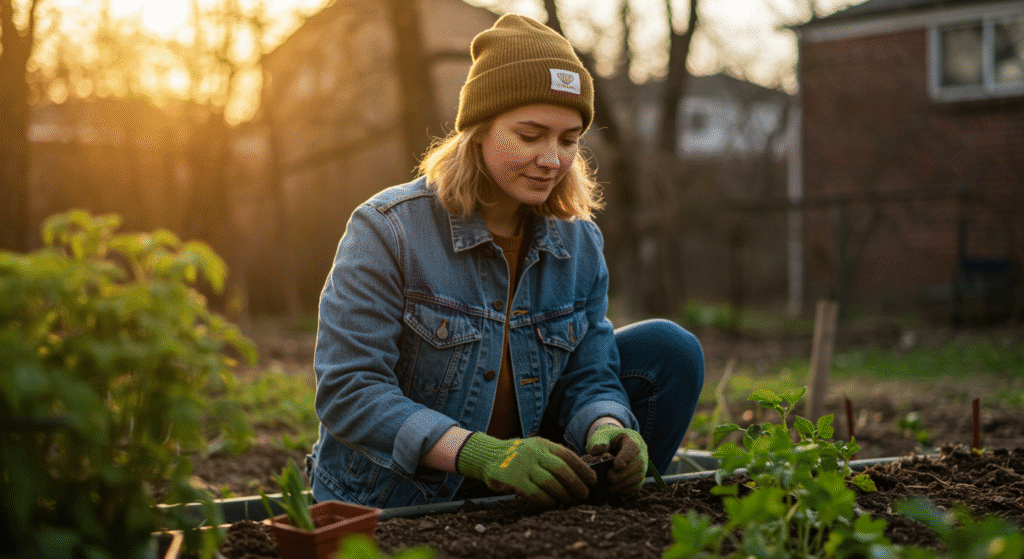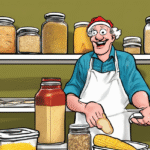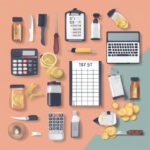Are you worried about emergencies or disasters and want to start prepping, but don’t know where to begin? Prepping for beginners can seem overwhelming, but don’t let that hold you back. With the right knowledge and a solid foundation, you can start your prepping journey confidently. In this post, we’ll share the best tips for beginning preppers, based on expert-verified advice and factual data. From building a sustainable emergency food and water stockpile to practicing core survival skills, we’ve got you covered. Read on to learn how to be a prepper without feeling overwhelmed.
I. Introduction
A. Explanation of prepping for beginners
Prepping, short for preparation, refers to the act of stocking up on essential supplies and gaining necessary skills to be better prepared for emergencies. Being prepared is especially important for beginners, as they may not be familiar with what basic items are needed for survival. Prepping encompasses a wide range of emergency scenarios, such as natural disasters, power outages, and civil unrest. By having a plan and stockpiling essential items, preppers can be ready for any eventuality. To start prepping, beginners should focus on stocking up on basic items like food and water, medical supplies, and hygiene and sanitation products. They should also start living below their means and avoid overspending in the first month. Storing plenty of water is crucial, but avoid using old milk jugs as storage containers. Moreover, every beginner prepper should have emergency food and learn the types of emergency food items available in the market. By following these steps and accumulating necessary items and skills, beginners can lay a solid foundation and begin on their prepping journey. [1][2]
B. Importance of prepping for emergencies
In today’s world, emergencies are becoming more and more common. Natural disasters, political unrest, and economic instability are just a few examples of the things that can disrupt your life in an instant. It’s important to be prepared for these situations, and that’s where prepping comes in. Prepping is the act of preparing for emergencies by stockpiling essential items and learning necessary survival skills.
The importance of prepping cannot be overstated. When an emergency occurs, it’s often too late to start preparing. By prepping ahead of time, you can ensure that you and your loved ones have everything you need to survive. This includes food, water, shelter, and medical supplies.
Prepping also gives you a sense of security and peace of mind. Knowing that you can handle whatever comes your way can help you feel more confident and less anxious. It’s a way to take control of your life and protect yourself and your family.
Overall, prepping is an essential part of being a responsible and proactive member of society. By taking the time to prepare for emergencies, you can minimize the impact of disasters and ensure that you are ready to handle whatever comes your way. [3][4]
C. Brief overview of the blog content
If you’re new to prepping, it can be overwhelming to know where to start. That’s why we’ve put together a brief overview of the best tips for beginning preppers. First, it’s important to live below your means and not overspend in the first month of prepping. Begin by storing plenty of water, but avoid storing it in old milk jugs. We also recommend having the top 3 everyday essentials, including a knife, multi-tool, and flashlight. Emergency food is essential, and there are different types to choose from. It’s also crucial to know which natural disasters are most likely to occur in your area. Finally, don’t forget about the importance of comfort foods and forms of entertainment for yourself and your family, and get to know your neighbors. By taking baby steps and keeping to the basics, you can build a solid foundation for your prepping journey. Remember, it’s all about reducing the chances of major life disruptions and better recovering when they do happen. [5][6]
II. Getting Started with Prepping
A. Start living below your means
Learning to live below your means can be a challenging but rewarding experience, particularly when it comes to achieving financial stability. A great place to start is by creating a budget, tracking your spending and reducing any unnecessary expenses. By examining your current habits and expenses, you may find areas where you can make cutbacks or eliminate completely. It’s important to make sure that your budget is realistic and achievable, so don’t forget to include all of your monthly expenses. To help stay on track, you can use simple spreadsheets or budgeting apps to monitor your spending and keep an eye on your progress. For instance, paying using credit cards can be helpful if you pay them off each month, but can lead to high levels of debt when not used responsibly. Lastly, consider moving to a smaller apartment or car to save more money and eliminate unnecessary expenses. With some simple steps, you can learn to live within your means, improve your financial health and achieve your financial goals. [7][8]
B. Don’t overspend in the first month
When starting prepping for emergencies, it can be easy to fall into the trap of overspending in the first month. But don’t panic, it’s important not to blow your budget all at once. Take it slow and steady. Start with the basics of food, water, and shelter. Make a list of what you will need and stick to it. Set a budget for each item and do your research to find the best deals. Don’t be tempted to buy expensive emergency kits that promise to solve all your problems. Instead, focus on buying quality items that you can use in everyday life as well. Look for sales, buy in bulk, and use coupons when possible. Stock up slowly over time, gradually building your supply. Prioritize the essentials, like water, before moving on to other supplies. And most importantly, don’t go into debt. It’s important to stay financially stable while prepping for emergencies. By following these tips and taking a cautious approach, you can begin prepping for emergencies without overspending in the first month. [9][10]
C. Store plenty of water
Water is an essential element of prepping, ensuring you have enough water is a top priority. To store plenty of water, you need to know the best way to store and treat water for emergencies. Unopened commercially bottled water is the safest and most reliable source of water in an emergency. Store at least 1 gallon of water per person per day for 3 days, and try to store a 2-week supply if possible. When storing water, use food-grade water storage containers. FDA-approved food-grade storage containers will not transfer toxic substances into the water. If you don’t have bottled water, you can make your water safe to drink by following the instructions on CDC’s page and using clean containers to collect and store your water. Remember to observe the expiration date for store-bought water. If you are filling containers with water to store, replace the water every 6 months. After filling with water, label the container as “drinking water” and include the storage date. Keep containers in a cool place away from direct sunlight and from areas where toxic substances such as gasoline or pesticides are present. With these tips, you can store plenty of water for emergencies and ensure a safe supply of drinking water when disaster strikes. [11][12]
D. Avoid storing water in old milk jugs
When it comes to storing emergency water, it’s important to avoid using old milk jugs. Milk jugs are made from biodegradable plastic, which means they break down relatively quickly. Even if they don’t have any visible holes or cracks, they may not be reliable for long-term water storage. On average, milk jugs will start to leak after about 7-8 months, but they can start leaking as early as 3 months or as late as a year. This variation in lifespan depends on factors such as the type of plastic used for the jug, and the conditions in which it is stored.
So what should you use instead of milk jugs? There are several options. You could buy bottled water, but this can be expensive and contributes to plastic waste. Alternatively, you could repurpose other plastic bottles, such as soda bottles or Gatorade jugs. These are made from thicker, longer-lasting plastic that is more suitable for water storage. You could also invest in food-grade water containers, which are designed specifically for long-term water storage. Whatever option you choose, be sure to label your containers as drinking water and include a storage date. Replace the water every six months, and store it in a cool, dry place away from direct sunlight. [13][14]

E. The top 3 everyday essentials for every beginner prepper
When it comes to beginning prepping, it’s important to focus on the essentials. Here are the top three everyday items that every beginner prepper should have:
1. Water Filtration System: Clean, drinkable water is a key necessity for survival. Instead of relying on storing large amounts of bottled water, invest in a water filtration system. These systems can be portable or installed in the home and can remove most contaminants from natural water sources.
2. Multi-Tool: A multi-tool is a versatile tool that can perform various functions. It can be used for cutting, opening cans, tightening screws, and more. Investing in a high-quality multi-tool can be the difference between surviving and struggling in a crisis situation.
3. Emergency Food: Maintaining a stock of non-perishable, nutrient-dense emergency food is crucial. In the event of a disaster, access to fresh food may be limited. Canned goods, protein bars, and freeze-dried meals are all good options for emergency food storage.
By focusing on these three essentials, beginner preppers can create a solid foundation for their preparedness journey. Remember, gradual progress is key, so start small and work your way up over time. [15][16]
III. Food Prepping
A. The importance of having emergency food
Preparing an emergency food supply is a crucial step in preparing for any emergency or disaster. At its most basic level, emergency food is food that can be stored for extended periods without needing refrigeration or cooking. Having such food on hand can ensure the survival of your family during a crisis, when roadways and stores may be inaccessible. It can also provide peace of mind in knowing that your family won’t go hungry during an emergency.
To begin, assess the geography of your home and neighborhood to determine the best location to store your emergency food supply. Consider the needs of each family member, including any special diets or allergies. Make a list of what you already have on hand and what additional items are needed. Non-perishable, ready-to-eat items like canned goods, dried fruits and nuts, granola bars, and other high-energy snacks are wise choices.
When stocking food, take care to store it in a cool, dry place in sealed, airtight packaging. Be sure to check expiration dates and rotate your food supply regularly to keep it fresh. Overall, planning and creating an emergency food supply is a small but critical step in keeping your family prepared during a crisis. [17][18]
B. Types of emergency food
When it comes to emergency food, there are a few types that you should consider. First, shelf-stable non-perishable goods are the best options as they don’t require refrigeration and can last for long periods of time. This category includes canned food, which while not the healthiest or tastiest option, can be filling and convenient. You can also try ready-to-eat meals like MREs, which can provide all the necessary calories in a single package. For some quick energy, consider adding rice, pasta, or beans to your emergency food inventory. These foods are versatile and can be cooked in various ways. Another excellent option is freeze-dried food, which can have a shelf life of up to 30 years and only needs water to be rehydrated. Finally, don’t forget to include familiar comfort foods that you and your family enjoy eating regularly. These types of emergency foods can help provide a small sense of normalcy during stressful situations. Remember to choose foods with long shelf lives and store them in a cool, dry place to ensure they stay fresh. [19][20]



